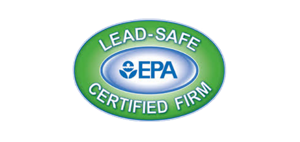Asbestos has long been recognized as a hazardous material, posing significant health risks when its fibers become airborne and are inhaled. The traditional approach to dealing with asbestos has been through abatement, which involves removing and disposing of the materials containing asbestos. But is there a way to neutralize asbestos, making it safer and easier to manage?
This article delves into the possibility of asbestos neutralization, exploring innovative treatments, technical insights into the neutralization process, new products for asbestos neutralization, and the impact of asbestos abatement on public policy. Join us as we uncover the latest developments in the field and challenge common beliefs about asbestos elimination.
Key Takeaways:
- Asbestos is a hazardous material that poses significant health risks when its fibers become airborne.
- Traditionally, asbestos has been managed through abatement, but is there a way to neutralize it?
- The article explores innovative treatments, technical insights, and new products for asbestos neutralization.
- Understanding the impact of asbestos abatement on public policy is crucial.
- Stay informed about the latest developments in asbestos neutralization.
Understanding Asbestos and Its Hazards
Asbestos is a naturally occurring mineral that has been extensively used in various industries for its heat resistance and durability. It is commonly found in construction materials such as insulation, roofing, and fireproofing.
However, despite its beneficial properties, asbestos poses significant health risks due to its tiny fibers. These fibers can easily become airborne when materials containing asbestos are disturbed, leading to potential inhalation and subsequent health problems.
Exposure to asbestos has been linked to severe respiratory diseases, including lung cancer and mesothelioma. The long-term effects of asbestos exposure can be debilitating, making it crucial to comprehend the properties and hazards of asbestos in order to develop effective methods for its neutralization.
By understanding the risks associated with asbestos fibers and their potential harm to human health, researchers and industry professionals can work together to find innovative solutions that prioritize safety and minimize exposure in construction materials.
Innovative Treatments to Neutralize Asbestos
One innovative treatment for asbestos neutralization is the use of acidic foam. This treatment process involves applying an acidic foam to asbestos-containing materials, such as fireproof coatings on structural steel. The foam penetrates the asbestos fibers and digests them, changing their chemical makeup and rendering them harmless. The fireproofing properties of the material are maintained, providing a safe and effective solution for asbestos neutralization. This treatment process has shown promising results and is currently being developed for commercial use.
Technical Insights into the Asbestos Neutralization Process
Researchers have conducted extensive studies on the use of phosphoric acid for the neutralization of asbestos. These studies have revealed that asbestos can be effectively decomposed using a 30% concentration of phosphoric acid at a temperature of 90°C for 60 minutes.
This treatment process successfully eliminates the harmful properties of asbestos, transforming it into inert substances, such as calcium phosphate, magnesium phosphate, and silica. These resulting products are free of harmful fibers and can be utilized for various applications, including fertilizer production.
The innovative use of phosphoric acid paves the way for alternative methods of asbestos disposal that align with waste management regulations. By effectively neutralizing asbestos, this process contributes to the elimination of the harmful properties associated with asbestos and ensures safer management practices.
New Asbestos Neutralization Products and Their Benefits
The development of asbestos neutralization products is revolutionizing the asbestos abatement industry, offering numerous benefits to building owners and contractors. One such product is a foamy solution that can be applied directly onto asbestos-containing fireproofing. The foam effectively digests the asbestos fibers, transforming them into harmless minerals.
This innovative product eliminates the need for traditional asbestos removal methods, which are often labor-intensive and time-consuming. Instead of scraping and removing the asbestos, the foamy solution chemically alters the fibers, making them safe and eliminating the risk of airborne asbestos particles. This not only reduces construction time but also avoids the expenses associated with regulated waste disposal.
By utilizing the foamy solution for asbestos neutralization, building owners can experience significant cost savings. Traditional asbestos removal methods can be expensive due to the labor required and the need for specialized equipment. With the foamy solution, these costs are eliminated, allowing for more efficient and cost-effective asbestos abatement.
The use of this product also offers additional benefits in terms of safety and convenience. Traditional asbestos removal methods often involve the construction of air-tight barriers to prevent the spread of asbestos fibers. However, with the foamy solution, there is no need for these barriers, making the process less disruptive and minimizing the impact on daily operations.
In summary, the development of new asbestos neutralization products, such as the foamy solution, is transforming the way asbestos abatement is conducted. These products offer cost savings, eliminate regulated materials, and reduce construction time, providing a safer and more efficient solution for managing asbestos-containing materials.
Can Asbestos Be Neutralized?
While there have been significant advancements in asbestos neutralization, it’s important to note that not all types of asbestos can be effectively neutralized with current treatments. For example, the foamy solution treatment discussed earlier may not be applicable to amosite asbestos, which is commonly used for thermal insulation.
However, ongoing research and development are focused on developing solutions for both types of asbestos. Patent applications have been filed, and additional funding is being sought to further advance the neutralization process. Collaborations with utilities and companies in the industry are also underway to turn innovative chemistry into a commercial process.
Types of Asbestos: Chrysotile and Amosite
When it comes to considering neutralization methods for asbestos, understanding the different types is crucial. The two primary types of asbestos are chrysotile asbestos, also known as white asbestos, and amosite asbestos.
Chrysotile asbestos is commonly used in fireproof coatings, making it a target for innovative treatment processes. Its fireproofing properties have made it a popular choice in various industries. However, if chrysotile asbestos fibers become airborne, they pose significant health risks when inhaled.
Amosite asbestos, on the other hand, is primarily used for thermal insulation. It has excellent heat resistance properties, making it suitable for insulating materials in buildings and industrial applications. Just like chrysotile asbestos, amosite fibers can also pose serious health risks if they become airborne and are inhaled by individuals.
Recognizing the characteristics and applications of each type of asbestos is vital in tailoring effective neutralization strategies for specific materials. While both types of asbestos require careful management, understanding their unique properties enables safer handling and the development of targeted neutralization methods.
Asbestos Abatement and Public Policy
The neutralization of asbestos has important implications for public policy and regulations. Asbestos abatement practices are governed by strict guidelines to ensure public safety and environmental protection. The development of innovative neutralization methods and products can lead to changes in waste management practices and regulations surrounding asbestos disposal. Collaborations between industry, government agencies, and research institutions are vital in developing safe and effective techniques for asbestos abatement. The application of these new technologies can significantly impact public health and safety standards.
Conclusion
Asbestos neutralization is an area of extensive research and development, aiming to find effective solutions for managing this hazardous material. The development of innovative treatments and products holds great promise in neutralizing asbestos while preserving the desired properties of the materials. Ongoing technical insights and research efforts provide hope for the future, paving the way for safer and more efficient methods of asbestos abatement.
With the continuous evolution of public policy and regulations, advancements in neutralization technologies play a vital role in ensuring the safety of workers and the general public. Collaborative efforts and investment in research are crucial for driving the future developments in asbestos neutralization and its management.
Looking ahead, the focus remains on developing safer and more effective methods of asbestos neutralization. This includes exploring new treatment processes, chemical solutions, and environmentally friendly alternatives to ensure efficient asbestos abatement. These advancements will contribute to the creation of industry-best practices and help maintain the highest standards of safety for workers and communities. Through ongoing collaboration and research investment, the future holds great potential for reduced risks associated with asbestos exposure and the implementation of safer management practices.
Asbestos neutralization is an evolving field, and future developments are expected to bring even greater progress. Continued efforts from researchers, industry experts, and policy makers are essential in driving the innovation and improvement needed to further refine asbestos abatement techniques. The ultimate goal is to mitigate the health risks posed by asbestos and develop comprehensive solutions that ensure a safer and healthier environment for all.
FAQ
Can asbestos be neutralized?
Yes, there have been advancements in treatments that aim to neutralize asbestos, making it safer and easier to manage.
What are the hazards of asbestos?
Asbestos fibers pose significant health risks when inhaled and have been linked to severe respiratory diseases, including lung cancer and mesothelioma.
What are some innovative treatments to neutralize asbestos?
One innovative treatment is the use of acidic foam, which digests asbestos fibers and renders them harmless. Phosphoric acid has also been explored as an effective neutralization method.
How does acidic foam neutralize asbestos?
Acidic foam is applied to asbestos-containing materials, such as fireproof coatings, and penetrates the fibers, changing their chemical makeup and making them safe.
What are some technical insights into the asbestos neutralization process?
Studies have shown that a 30% concentration of phosphoric acid at a temperature of 90°C for 60 minutes effectively decomposes asbestos, eliminating its harmful properties.
Are there any new products for asbestos neutralization?
Yes, there are foamy solutions that can be sprayed directly onto asbestos-containing fireproofing, digesting the fibers and transforming them into harmless minerals.
Can all types of asbestos be neutralized?
Not all types of asbestos can be effectively neutralized with current treatments, but ongoing research aims to find solutions for both chrysotile and amosite asbestos.
What are chrysotile and amosite asbestos used for?
Chrysotile asbestos is commonly used in fireproof coatings, while amosite asbestos is primarily used for thermal insulation.
What is the impact of asbestos abatement on public policy?
Asbestos abatement practices are governed by strict guidelines, and advancements in asbestos neutralization can lead to changes in waste management practices and regulations.









